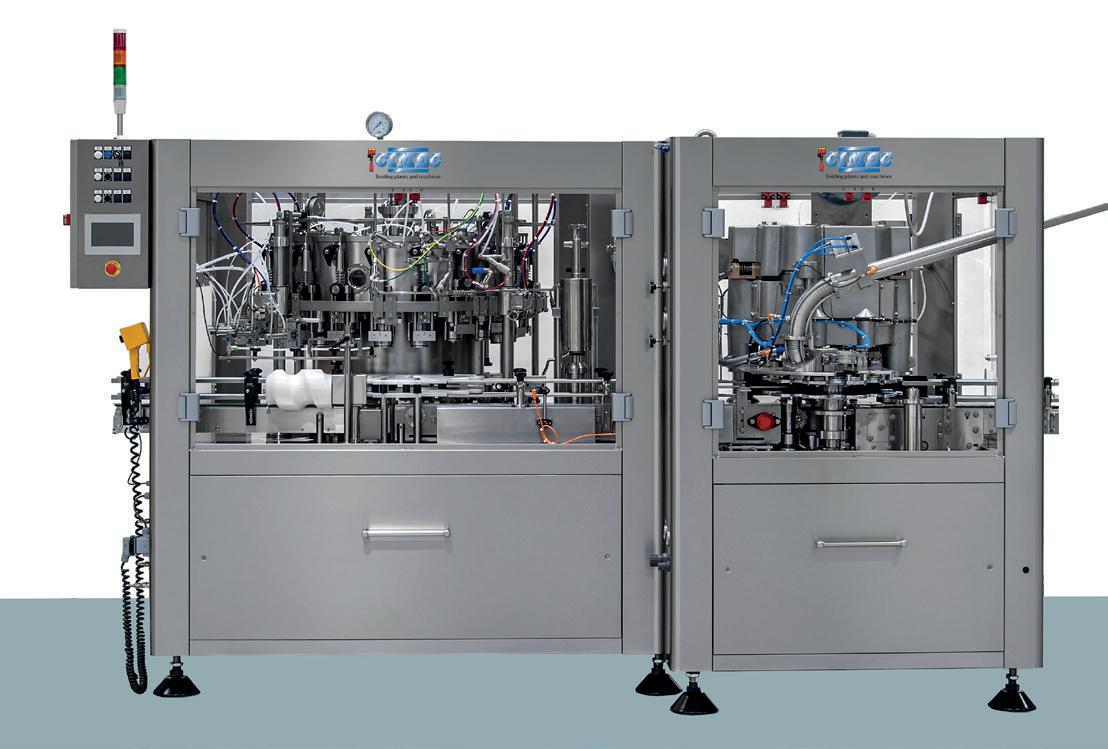
3 minute read
Dial up the diacetyl
How many brewers relish a taint of diacetyl in their beers? Few if any, but diacetyl is a ubiquitous feature of many fermentations as, for example, being an intrinsic feature of yoghurt. Diacetyl is even added as a flavouring to a range of foods yet in beer we have a strong aversion to its appearance with, in many cases, a rejection level of 0.2 mg per litre imposed in QA standards.
To some extent this may arise from variation in sensitivity to diacetyl’s flavour of butterscotch with some drinkers highly sensitive compared to others and making an outspoken expression of distaste. In addition, there may be an historic legacy to address from US prohibition brewing.
Detection may depend on other flavours present. A strong matrix effect is well recognised in the wine trade with flavour detection levels varying for wine in one analysis by fifteen fold between Chardonnay at 0.18 mg per litre and Cabernet Sauvignon at 2.68 mg per litre. The same applies to beer with diacetyl much less acceptable in lagers than in ales –again due to the presence or absence of other flavours.
Levels in other foods can reach much higher amounts particularly in milk products with up to 4mg per kg in cheese, 17 mg per kg in yoghurt and a pungent 27 mg per litre in margarine. Even coffee can reach 2.8 mg per litre. All foods which have no reputation or outcry of diacetyl taint.
Diacetyl is well recognised in biochemical understanding but is not an essential metabolite. Rather it is a by-product of amino acid synthesis produced in the wort not in the yeast cell. All cells need amino acids to survive and obtain most from the nutrients provided but if absent may be synthesised through a metabolic pathway. Valine is one of the standard 20 amino acids and may be synthesised by yeast.
α-acetolactate (AAL) is an intermediate in this synthesis and may leak from yeast cells into the wort where it decomposes into diacetyl and carbon dioxide.
Heat speeds up the decomposition of AAL and the production of diacetyl as do copper, ferric and ammonium ions as well as acidic conditions. The character and handling of your wort can thus enhance the appearance and persistence of diacetyl.
A warm conditioning phase is a wellpracticed approach to reducing diacetyl after fermentation. This reduction occurs in the yeast cell which assimilates the diacetyl from the wort and is temperature dependent. By raising the wort temperature, say above 12oC or even as high as 16-20oC for 48 hours, diacetyl will be decomposed to acetoin and eventually 2,3-butanediol, a compound with a much higher flavour threshold and negligible impact on the beer.
Alternative approaches have been developed and include the addition of a bacterial enzyme, α-acetolactate decarboxylase, to convert acetolactate directly to acetoin in the wort so by passing diacetyl. Alternatively, the enzyme may be entrapped in a column through which beer flows. The gene for this enzyme has also been introduced into yeast cells so allowing direct action.
Of course, an alternative origin of diacetyl is bacterial contamination, particularly pediococci and other lactic acid bacteria. These will be the source for diacetyl in milk fermentations and if present as contaminants in wort will be able to synthesise high levels. That said their presence will be associated with other contributions, not least acidity so making diacetyl’s origin identifiable.
While acknowledging the extensive efforts made to manage diacetyl levels in beer it is still pertinent to return to the question of why it is so undesirable in beer but acceptable in other foods? Moreover, let’s put diacetyl hazards into context and consider the impact of it in cigarette smoke, vaping mixtures and its contribution to “popcorn lung” otherwise known, worryingly, as obliterative bronchiolitis - an irreversible degradation of lung tubules causing constrictions and blocking your breathing.

Offensive as diacetyl might be proclaimed in brewing it has been used extensively as a positive flavour in other indulgencies. This includes providing a buttery character such as in popcorn, crisps and crackers. It is also used to add brown flavour sweetening in chocolate, ice cream, soft drinks, sauces and many other foods. Until 2007 it was a major addition to popcorn, until, that is, a study associated it with the development of obliterative bronchiolitis in production workers breathing in diacetyl all day. Affected workers, along with a consumer who consumed two bags of popcorn a day, won $20 million damages for their exposure. Shortly after which its addition ceased. A similar scenario of concern was repeated more recently with the inclusion of diacetyl in vaping mixtures until, again, medical alarm generated controls. A comparison with levels in cigarette smoke is informative – between 250 and 361 mg per kg for tobacco products - but it seems that the exposure mechanism is most relevant. As would be expected vapour rather than ingestion is associated with obliterative bronchiolitis. Breathing diacetyl will damage sensitive lung tissue. Diacetyl in food and beverages will have a much lower impact on more resistant digestive tissue and diacetyl is generally regarded as a safe, food additive. Unless you spend all day breathing in steam from boiling beer I doubt that beer diacetyl can be viewed as a hazard. Instead, diacetyl may be more of an indicator of uncontrolled brewing, as would be practiced during American prohibition and denounced by the established industry. Traditional beers of past centuries would have had more elevated levels and possibly suitably balanced for beer styles with a more robust range of flavours. Denying diacetyl at low levels may not be as essential as we may have once thought.










